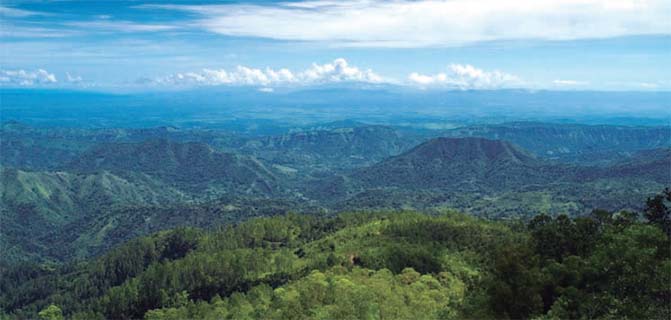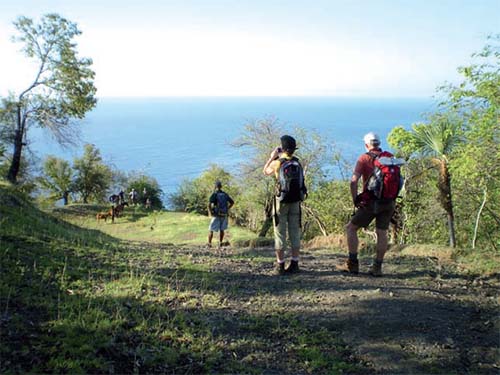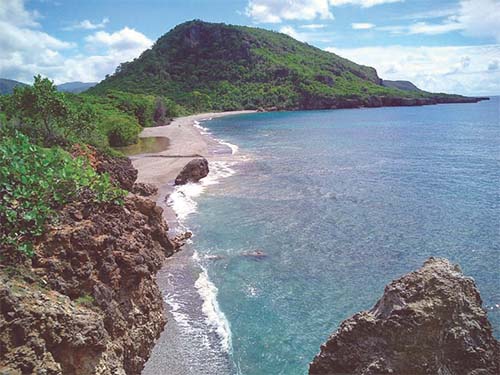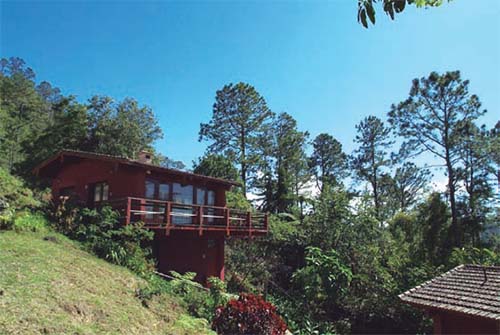
Every two years, Cuba organizes an international conference on nature tourism in a different setting. For 2013, the eastern province of Granma and its capital, Bayamo, is the venue, in an area that is environmentally, historically and culturally different. One significant strategy for Cuban tourism authorities is to diversify options for recreation, going beyond the traditional sun and beach offer that characterizes this archipelago, where interest is growing in travel that focuses on nature and the environment.
 In the context of these projections, the 9th International Nature Tourism Conference, TURNAT 2013, is set for September 24-27 in the eastern province of Granma, and will be centered in its capital city, Bayamo.
In the context of these projections, the 9th International Nature Tourism Conference, TURNAT 2013, is set for September 24-27 in the eastern province of Granma, and will be centered in its capital city, Bayamo.
This biennial conference will include the presence of tourism industry experts, particularly those who specialize in nature, conservation and the development of projects that involve the environment and its protection.
 The program is loaded with attractions: participants begin at Bayamo's Hotel Sierra Maestra, where they will hear presentations on nature tourism in Granma, challenges facing Cuba's national system of protected areas, and the management of the country's cultural heritage.
The program is loaded with attractions: participants begin at Bayamo's Hotel Sierra Maestra, where they will hear presentations on nature tourism in Granma, challenges facing Cuba's national system of protected areas, and the management of the country's cultural heritage.
The conference is complemented by a trade fair, information on conservation, and opportunities for exchange to facilitate communication among participants, as well as post-event tours to learn about the beauty of the local surroundings, where the landscape is strongly influenced by the mountains.
Tours planned for conference delegates will cover the Desembarco del Granma National Park (a Natural World Heritage site) and a wildlife refuge. The setting for this opportunity is known for its beauty, and borders the Granma Park and the Pico Turquino National Park, both of them full of endemic flora and fauna, and major sites of biodiversity and conservation.
 The Sierra Maestra is the country's most extensive mountain region, and features the highest peak nationwide, the Pico Turquino, which stands 1,974 metres above sea level.
The Sierra Maestra is the country's most extensive mountain region, and features the highest peak nationwide, the Pico Turquino, which stands 1,974 metres above sea level.
The Desembarco del Granma park is in the westernmost part of the Sierra Maestra and covers some 25,000 hectares (about 250 square km), featuring beautiful rocky crags and vertical cliffs, and providing a dramatic landscape.
For its part, the Turquino National Park is home to rivers, forests, mountain peaks and valleys filled with lush vegetation. The southern slopes of the Sierra Maestra Mountains are rugged and staggered, and the local ecosystem is dry. In all, the Sierra Maestra covers three distinct settings: the Turquino National Park, the Desembarco del Granma Park, and La Gran Piedra.
 Turquino National Park is mountainous, with more than 17 peaks that are over 1,300 metres above sea level. The peaks interconnect, forming a landscape like a tourism postcard par excellence for TURNAT 2013, with a treasure of flora and fauna.
Turquino National Park is mountainous, with more than 17 peaks that are over 1,300 metres above sea level. The peaks interconnect, forming a landscape like a tourism postcard par excellence for TURNAT 2013, with a treasure of flora and fauna.
The Granma Park has one extremely interesting site in particular: Marea del Portillo, a strip of well-preserved coastal mangrove forest with many endemic features, in an area near both mountains and forests.
Hiking, camping, mountain-climbinghellip; many and diverse are the recreational and sporting specialties that can be practiced in this region. Along with its natural beauty, this region is known for its culture and tradition, which feature prominently in this year's TURNAT conference.
 In fact, the capital city of Bayamo is strongly associated with national history; it was here that Cuba's patriotic sentiment is known to have originated. San Salvador de Bayamo is its original name, and it was founded as Cuba's second villa on November 5, 1513 by the Spanish conquistador Diego Velásquez.
In fact, the capital city of Bayamo is strongly associated with national history; it was here that Cuba's patriotic sentiment is known to have originated. San Salvador de Bayamo is its original name, and it was founded as Cuba's second villa on November 5, 1513 by the Spanish conquistador Diego Velásquez.
Because of the River Bayamo's suitable conditions for navigation, the villa flourished rapidly, along with another eastern city, Santiago de Cuba, which temporarily served as the colony's capital before Havana was permanently established as its capital.
As part of its historical significance, Bayamo was the place where the country's national anthem was heard for the first time, on October 20, 1868. And just a few months later, on January 12, 1869, its inhabitants preferred to burn the city down rather than surrender to the Spanish colonial troops.
It is in this special setting that TURNAT 2013 will be receiving participants from all over the world who are interested in learningmdash;in the best way possiblemdash;about a significant area for tourism in Cuba, as they discuss the most important tendencies worldwide in nature tourism.